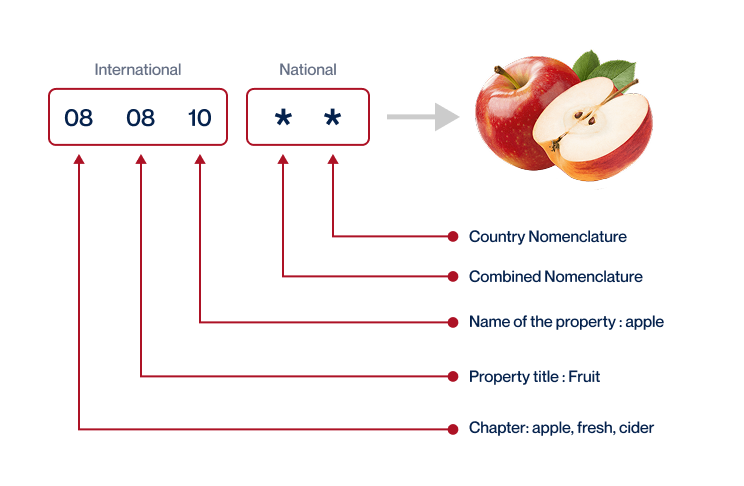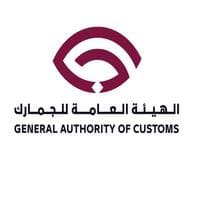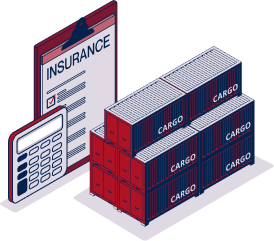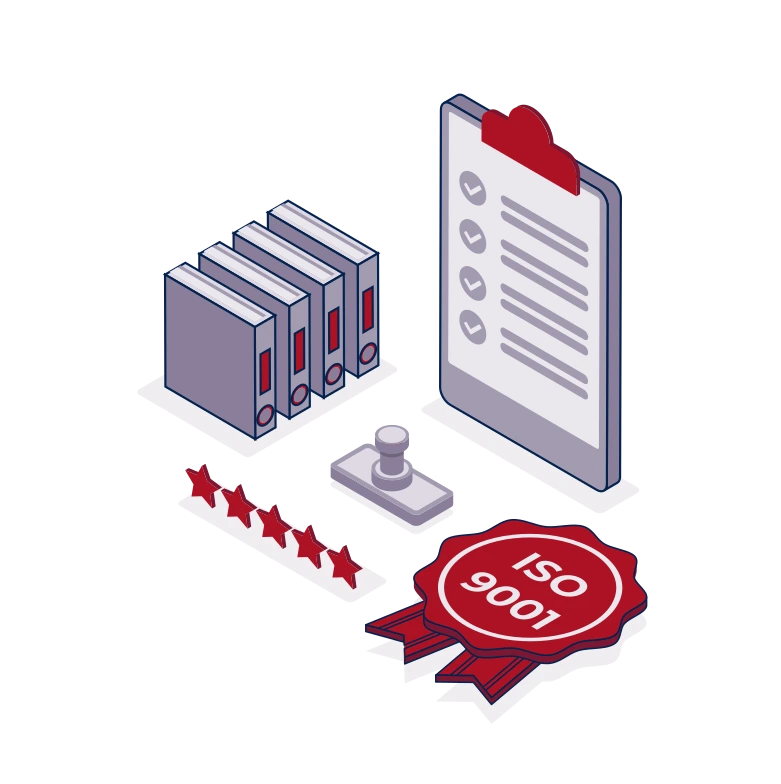Freight Shipping between Qatar and Serbia | Rates – Transit times – Duties and Taxes
Who knew that starting a freight journey from the desert heat of Qatar to the cooler climes of Serbia could be as exhilarating as a belly dancer's first public performance? However, the thrill might be marred by challenges like understanding rates, estimating transit times, and figuring out the labyrinth of customs regulations. Fear not! This guide is your crystal ball into the complex yet captivating world of international freight. You will be introduced to different freight options, unravel the intricacies of customs clearance, duties, and taxes, and receive practical advice engineered specifically for businesses like yours. If the process still feels overwhelming, let DocShipper handle it for you! As your trusted international freight forwarder, we convert all your freight forwarding hurdles into success stories by managing every single detail, ensuring a smooth shipping journey from Qatar to Serbia.
Which are the different modes of transportation between Qatar and Serbia?
Selecting the right means of transport between Qatar and Serbia is a bit like choosing the best route for a road trip. You don’t want traffic jams (restrictions) or long detours (extra costs). While these two countries are not connected by land, air and sea transport serve as efficient highways. If you've got an urgent, lightweight package, think of air freight as your express jet. But for heavy, less time-sensitive products, sea freight is more like a sturdy cargo ship. Keep in mind, it's all about synchronizing your choice with what you want to send, and when it should hit Serbian shores.
Need help with your shipment?
Need assistance with your shipment? Dont hesitate to contact us even for a simple question. Choose the option that suits you
Live chat with an expert Chat on WhatsApp Free Quote 24hHow can DocShipper help you

Sea freight between Qatar and Serbia
Shipping goods between Qatar and Serbia can feel like threading a needle with fine thread while riding a camel – a bit bumpy! Despite the challenges, businesses are thriving, creating a vibrant trade relationship that leverages the strategic cargo ports linking the key industrial centers of both nations. If you’ve ever played the long, tedious game of snakes and ladders, you’ll find similarities with sea freight. It’s painstakingly slow, but the cost reduction when dealing with bulky, high-volume goods is a ladder worth climbing.
Like a fisherman encountering a storm, many shippers face palpable difficulties: misunderstood procedures, unidentified pitfalls, and a labyrinth of logistics when shipping between these nations. The ocean can be vast and tumultuous, but with a reliable compass – the best practices and specifications we’ll explore – navigating these waters can certainly become smoother. Prepare to simplify your procedures, avoid rookie mistakes, and move towards efficient shipping amidst the beautiful but turbulent ripples of international trade.
Main shipping ports in Qatar
Hamad Port
Location and Volume: Located in Umm Al-Houl, Qatar, Hamad Port is the top-ranking maritime gateway in the country, with a shipping volume exceeding one million twenty-foot equivalent unit (TEU) in 2018.
Key Trading Partners and Strategic Importance: Hamad Port exports to key trading partners globally, with India, China, and the Gulf Cooperation Council (GCC) countries as significant recipients. This port holds strategic importance due to its capacity to accommodate the world’s largest ships and its state-of-the-art facilities.
Context for Businesses: If your business is looking to expand to Asian and Middle Eastern markets, incorporating Hamad Port into your logistics plan can be highly beneficial. Its favorable geographical positioning offers shorter shipping routes and efficient handling operations, reducing transportation time and cost.
Doha Port
Location and Volume: Situated in the heart of Doha city, Doha Port previously served as Qatar’s main seaport before the inauguration of Hamad Port. While the port now focuses primarily on cruise operations, it still maintains a shipping volume that supports local trade.
Key Trading Partners and Strategic Importance: Doha Port supports intraregional trade, connecting Qatar to other Gulf countries. It is strategically critical as it promotes Qatar’s tourism industry by catering to luxury cruise liners during the cruise season.
Context for Businesses: If your business is in the luxury market or is related to tourism, Doha Port could be incorporated into your strategy as a channel for shipping luxury goods or promoting services to tourists arriving by sea.
Ras Laffan Port
Location and Volume: Located in the north-eastern part of Qatar, Ras Laffan Port is a significant infrastructure component of the world’s largest greenfield developments, handling immense shipping volumes primarily related to Petroleum products.
Key Trading Partners and Strategic Importance: Dealing primarily in petroleum and gas exports, the port connects Qatar to major economies globally, including Asia’s growing markets. Its strategic importance is underscored by its extensive role in Qatar’s economy, functioning as the heart of the country’s Natural Gas operations.
Context for Businesses: If your business has ties to the petroleum or natural gas sectors, or if you’re seeking to enter these markets, Ras Laffan Port could be a crucial component of your shipping and procurement strategy. Its advanced infrastructure and industrial facilities can provide streamlined and efficient operations for your goods.
Context for Businesses: If your business has ties to the petroleum or natural gas sectors, or if you’re seeking to enter these markets, Ras Laffan Port could be a crucial component of your shipping and procurement strategy. Its advanced infrastructure and industrial facilities can provide streamlined and efficient operations for your goods.
Should I choose FCL or LCL when shipping between Qatar and Serbia?
Here’s a pivotal question you’ve likely come across in your shipping journey between Qatar and Serbia – should you consolidate your cargo or opt for a full container load? Your choice, be it Full Container Load (FCL) or consolidation (Less than Container Load, LCL), makes a significant difference. It not only impacts the cost and delivery time but quite possibly the success of your shipping venture. By the end of this comparison, you will be better equipped to choose an option that ticks all the right boxes for your situation. Let’s start by understanding these sea freight options better.
Full container load (FCL)
Definition: FCL, or Full Container Load, refers to an exclusive, reserved space for your cargo in a container, typically a 20'ft or 40'ft container, when using fcl shipping.
When to Use:Use FCL shipping between Qatar and Serbia if your cargo exceeds 13/14/15 CBM, where the idea is that the greater the volume, the cheaper the cost per unit. Additionally, FCL provides a security edge as your fcl container remains sealed from origin to destination, lowering the risk of damage or losses.
Example: a Serbian furniture company exporting large quantities of furniture to Qatar would benefit from fcl shipping. The high-volume nature of their shipment, coupled with the requirement for careful handling, makes FCL the go-to choice to secure a container exclusively, minimizing potential damages.
Cost Implications:In terms of cost, the initial fcl shipping quote for a 20'ft or 40'ft container might seem substantial compared to LCL. However, the cost per unit typically reduces for larger volumes when you consider the entire cargo in the rented space. Even though it requires more upfront payment, the per-unit savings can improve your overall freight budget.
Less container load (LCL)
Definition: Less Than Container Load (LCL) shipping involves sharing container space with other businesses' goods. Your goods are consolidated with other LCL shipments to fill up a container, hence the term 'consolidation'.
When to Use: Consider LCL shipping when your cargo volume is less than 13 to 15 cubic meters (CBM). It offers cost efficiency for low volume shipments, as you pay only for the space your cargo occupies. Plus, it's flexible—you can ship goods without waiting to fill an entire container.
Example: Suppose you're a Serbian manufacturer sending 10 CBM worth of machinery parts to a client in Qatar. With LCL shipping, your goods would be consolidated with others, allowing shipment without delay or the extra cost of booking an entire container.
Cost Implications: LCL shipping can be a budget-friendly option. However, remember that you're sharing container space, making handling more complex. This might result in additional handling fees at both origin and destination ports. It’s important to crunch the numbers and weigh the total costs against other shipping options like Full Container Load (FCL) freight.
Hassle-free shipping
Looking to ship between Qatar and Serbia? Choose DocShipper to make cargo shipping a breeze! Whether it's consolidation or a full container, our ocean freight experts can make the best recommendation for your unique scenario, considering important factors such as volume, weight, budget, and delivery times. Don't fret over freight details, let us use our expertise to simplify the process. Reach out for a stress-free shipping experience and a free, no obligation estimation today!
Shipping goods via sea freight from Qatar to Serbia generally takes an average of 22 days. These transit times are influenced by various factors such as the specific ports used, the weight, and the nature of the goods to be transported. For a more precise estimate tailored to your unique shipping needs, contacting a seasoned freight forwarder like DocShipper is highly recommended.
Here’s a snapshot of average sea freight transit times between key Qatari and Serbian ports:
| Qatari Ports | Serbian Ports | Average Transit Time (in days) |
| Port of Hamad | Port of Belgrade | 15 |
| Port of Ras Laffan | Port of Belgrade | 25 |
| Port of Doha | Port of Belgrade | 25 |
*Please note that actual transit times may vary. Always consult your freight forwarder for the most accurate quotes.
How much does it cost to ship a container between Qatar and Serbia?
Estimating the precise cost to ship a container between Qatar and Serbia can be complex. Ocean freight rates and other shipping costs depend on several dynamic factors, including the Point of Loading and Destination, the carrier chosen, the nature of the goods being shipped, and the unpredictable shifts in market conditions. Therefore, providing a broad estimate might range from $100 to $350 per CBM, but it’s important to remember that this can fluctuate. Yet, you’re not alone in this voyage! Our dedicated shipping specialists are ready to work side-by-side with you, offering personalized quotes based on your unique shipping needs – keeping costs effective and your business moving smoothly.
Special transportation services
Out of Gauge (OOG) Container
Definition: An OOG container is a special type of shipping container designed to handle out of gauge cargo. These containers have flat racks for easy loading of oversized cargo that don’t fit into standard containers.
Suitable for: Large equipment, machinery, or items with irregular shapes and sizes.
Examples: Construction equipment, yachts, oversized industrial machinery.
Why it might be the best choice for you: If your cargo is too large or heavy for a standard container, an OOG container offers increased flexibility and convenience.
Break Bulk
Definition: Break bulk refers to goods that must be loaded individually, and not in intermodal containers nor in bulk as with oil or grain. This method is often used when cargo is too big or heavy to be loaded into a single container.
Suitable for: Large, non-containerized cargo or those requiring special handling.
Examples: Windmills, turbines, large factory equipment or machinery.
Why it might be the best choice for you: If your business ships large items that cannot be disassembled or segmented, break bulk is an excellent option.
Dry Bulk
Definition: Dry bulk shipping involves transporting commodities in large quantities, where goods are loaded directly into the vessel’s hold.
Suitable for: Commodities loaded in loose form such as grains, coal, steel, etc.
Examples: Wheat, iron ore, coal, and other loose cargo loads.
Why it might be the best choice for you: If your business commonly ships large quantities of loose cargo, dry bulk provides a cost-effective solution.
Roll-on/Roll-off (Ro-Ro)
Definition: Ro-ro vessels have built-in ramps which allow cargo to be efficiently rolled on and rolled off the ship on their own wheels.
Suitable for: Trucks, trailers, cars, tractors, and other vehicles.
Examples: Cars, buses, trucks and other wheeled machinery.
Why it might be the best choice for you: If your business involves transport of wheeled cargoes, Ro-Ro enables quick loading/unloading and provides excellent protection.
Reefer Containers
Definition: Reefer containers are refrigerated containers used to transport temperature-sensitive goods. They maintain a constant temperature throughout the shipping process.
Suitable for: Fresh and frozen food items, pharmaceuticals and other perishable goods.
Examples: Seafood, fruits, vegetables, medicines, and any cargo needing temperature control.
Why it might be the best choice for you: If you are in a business that requires controlled temperature shipping like pharmaceuticals or food items, reefer containers assure product quality and integrity during the shipping process.
If any of these options align with your shipping needs, don’t hesitate to connect with DocShipper. We offer expert advice and a free shipping quote in less than 24h to help streamline your freight forwarding process.
Air freight between Qatar and Serbia
Choosing air freight for your shipping from Qatar to Serbia? Clever move! Especially when your cargo includes small, high-value goods like expensive electronic equipment or vital medical resources. With air freight’s unmatched speed and reliability, your precious cargo reaches its destination in no time. But here’s the crunch – a lot of folks shoot themselves in the foot by not taking certain factors into account before choosing air freight. They trip up estimating the cost accurately, often missing the magic formula. If you skip the details and go just by the gross weight, expect a bloated freight bill. Don’t let that be you. Hang on – we’ll lift the lid on the ‘how’ and ‘why’ of this in just a moment. Get primed for smoothening the bumps and turning air freight into your high-speed highway to profit.
Air Cargo vs Express Air Freight: How should I ship?
Weighing up your shipping options between Qatar and Serbia? Well, it’s a toss-up between Air Cargo, where your goods hitch a ride in a commercial airline, or Express Air Freight, which whisks your products off in a dedicated plane. Let’s delve into these options to see which fits your business operations like a glove.
Should I choose Air Cargo between Qatar and Serbia?
Choosing air cargo for shipments between Qatar and Serbia can be cost-effective and reliable. Renowned airlines like Qatar Airways Cargo and Air Serbia Cargo handle this mode of transport, and proposed links to their websites are here Qatar Airways Cargo and Air Serbia Cargo. However, longer transit times can be expected due to fixed schedules. Equally important is the fact that for cargo weighing from 100/150 kg (220/330 lbs), air cargo becomes more appealing. So, this option can be well-aligned with your budgetary needs while ensuring your shipment’s safety.

Should I choose Express Air Freight between Qatar and Serbia?
If your shipment to Serbia from Qatar is less than 1 CBM or weighs under 100/150 kg (220/330 lbs), express air freight is an ideal choice. Exclusive cargo planes, not used for passenger services, make this a rapid transit option, perfect for time-sensitive consignments. Trusted couriers such as FedEx, UPS, and DHL offer these efficient delivery solutions. Using these companies, your delicate or urgent cargo will be handled with utmost precision and speed. So, if timeliness and cargo safety are your priorities, consider express air freight for its remarkable advantages.

Main international airports in Qatar
Hamad International Airport
Cargo Volume: Hamad International Airport handled 529,436 metric tons of cargo in 2020.
Key Trading Partners: Predominantly with countries in Asia including China, Japan, and Singapore, and European partners such as Germany, Italy, and the UK. Large volumes of cargo also move between the US and Qatar.
Strategic Importance: As one of the world’s busiest cargo hubs, HIA is strategically located between East and West, acting as a major transit point for global trade. Its deceivingly large cargo facilities and extensive cargo routes make it an advantageous hub for businesses.
Notable Features: Besides large warehousing facilities, HIA has special areas dedicated to perishables, live animals, high-value goods, and oversized shipment. It also provides around-the-clock services and adopts innovative solutions such as automated storage and retrieval systems.
For Your Business: Consider using HIA if you often need to ship high-value or time-sensitive goods. Its central location makes it suitable for connecting your business with several key global markets. Also attractive for its comprehensive services, accommodating both regular cargo and specialized items.
Doha International Airport
Cargo Volume: Despite its closure for passenger transport in 2014, it still handles a fraction of cargo volume.
Key Trading Partners: Substantial cargo flow to/from places such as UAE, India, and Iran.
Strategic Importance: Though now secondary to Hamad International, Doha International is still strategically important given its location in the capital city and the existing infrastructure that can handle specialized cargo.
Notable Features: Maintains facilities for handling specialized cargo such as temperature-controlled and oversized freight. While not as modern as HIA, the airport nonetheless provides space for cargo movement.
For Your Business: Despite its reduced status, Doha International Airport can act as a spare hub for your cargo needs, particularly if they do not require the advanced facilities offered by Hamad International. Its specialized cargo facilities could be crucial for your specific shipping needs.
Main international airports in Serbia
Belgrade Nikola Tesla Airport
Cargo Volume: Over 22,500 tons of cargo annually.
Key Trading Partners: Germany, Russia, China, Italy, Turkey.
Strategic Importance: Serbia’s busiest and largest airport provides significant global reach. It’s an essential transport hub in the Balkan region due to its central location.
Notable Features: State-of-the-art cargo facilities and services, including express cargo and temperature-controlled handling. It also has a free trade zone in the airport area.
For Your Business: If your business frequently ships goods to/from Central and Eastern Europe, utilizing this airport could significantly optimize your logistics due to the airport’s robust cargo handling capabilities and strategic location.
Niš Constantine the Great Airport
Cargo Volume: Rapidly grows but currently handles lower volumes than Belgrade.
Key Trading Partners: Switzerland, Germany, Italy.
Strategic Importance: Located in Southeast Serbia, this airport provides another crucial gateway to the Balkans, with strategic proximity to various significant industrial and commercial centers.
Notable Features: Provides modern cargo handling services, albeit on a smaller scale. Additionally, it is in the process of expanding its facilities.
For Your Business: If your operation requires shipping to Southeast Europe, Constantine the Great Airport can be a cost-effective alternative due to its lower traffic volumes and efficient services. The intended expansions may also unlock further opportunities in the future.
Please note that the information is strictly indicative, it’s always a good practice to refer directly to the official websites linked in the name of the airports for the most accurate data.
How long does air freight take between Qatar and Serbia?
Shipping goods via air freight from Qatar to Serbia usually takes around 3 to 5 days. This transit time can fluctuate depending on various factors such as the specific airports involved, the weight of the cargo, and the nature of the goods. Keep in mind, extremely valuable or hazardous goods may require additional time for careful handling and comprehensive-safety processes. However, to get more precise and personalized transit times for your shipment, we highly recommend consulting with a freight forwarder like DocShipper.
How much does it cost to ship a parcel between Qatar and Serbia with air freight?
Air freight costs per kg between Qatar and Serbia can range broadly from $2 to $6, however, please note these figures are estimates. Providing an exact freight cost is impracticable due to factors such as the distance to/from airports, parcel dimensions, weight, and nature of goods. Our dedicated team understands these intricacies and tailors competitive quotes on a case-by-case basis to ensure your shipping requirements are met efficiently and economically. Contact us to receive your customized free quote in under 24 hours.
What is the difference between volumetric and gross weight?
In understanding air freight shipping, two essential concepts to grasp are Gross weight and Volumetric (or Dimensional) weight. Gross weight is the actual weight of your goods, including all packaging, indicated in kilograms (kg). On the other hand, Volumetric weight refers to the space your cargo occupies, effectively its size rather than its weight, and is also measured in kilograms.
In Air Cargo, to calculate volumetric weight, you divide the package dimensions (length x width x height in centimeters) by 6000. For Express Air Freight, the divisor is 5000. The Gross weight is typically just the scale reading of your packaged goods in kilograms.
Let’s illustrate with an example. Assume a shipment with a box measuring 100cm in length, 50cm in width, and 50cm in height. It weighs 80kg. For air cargo, your volumetric weight equals (1005050) / 6000 which equals 41.67kg (approximately 91.92 lbs), and for Express Air Freight it’s (1005050) / 5000, that is 50kg (approximately 110.23 lbs). The Gross weight is given as 80kg (approximately 176.37 lbs).
The freight charges matter because they are often determined by the greater between the gross and volumetric weight. This principle means that even if your goods are lightweight, if they occupy too much space, you may pay more. The intention is to ensure fair payment for the space usage on the transport vehicle.

Door to door between Qatar and Serbia
International door to door shipping is a comprehensive service where your goods are picked up from a specific location in Qatar and delivered directly to a specific address in Serbia. Considering its time-efficiency and the ease of customs clearance, the process offers numerous benefits. So ready to unravel the convenience of Door to Door shipping? Let’s dive in!
Overview – Door to Door
Shipping goods from Qatar to Serbia doesn’t have to be a hassle. With door to door service, your stress ebbs away as we handle the complexities of shipping, customs clearance, duties, and more. It’s like having your personal logistics officer. You’ll see why our clients at DocShipper frequently choose this straightforward solution. It’s not all rosy, with potential delays at customs a slight drawback, but the peace of mind and simplicity overwhelmingly win for most businesses. Cut through the red tape, focus on your operations, and let us bring Serbia closer to you with a proven stress-free logistics solution. Your international shipping journey starts here.
Why should I use a Door to Door service between Qatar and Serbia?
Trouble shipping your precious cargo from Qatar to Serbia? Can’t seem to find a logistics genie? A Door-to-Door service might just be your wish come true. Here are 5 reasons why this is the service you’ve been dreaming of:
1. Stress-Free Shipping: No more logistics labyrinth! The supplier will pick up the goods directly from your location, handle all the annoying paperwork, and deliver them straight to the destination. Total convenience, zero stress.
2. Timely Delivery: Time is money, right? A door-to-door service prides itself on punctuality. For urgent shipments, this service could be your speedy superhero, ensuring your cargo reaches safely right on schedule.
3. Specialized Care for Complex Cargo: Oddly shaped goods? Fragile freight? Relax! Door-to-door services specialize in handling complex cargo with utmost care, so it arrives secure and sound.
4. End-to-End Service: This service holds your hand (well, metaphorically), managing all tedious steps, from initial collection to final delivery. You won’t have to fret about coordinating with multiple trucking companies or freight carriers – isn’t that a relief?
5. Peace of Mind: With a door-to-door service, you’ll no longer need to track multiple stages of shipment on your own. Being assured that your goods are in professional hands, from pickup to destination, lets you focus on what you do best – your own business!
So, for a less daunting, more delightful shipping journey from Qatar to Serbia, Door-to-Door service rings all the right bells. Consider it your magic carpet in the world of freight forwarding. Wave your logistics worries goodbye!
DocShipper – Door to Door specialist between Qatar and Serbia
Looking to ship from Qatar to Serbia stress-free? At DocShipper, we’ve got you covered. We mobilize our expertise to manage every step: from packing to transportation, using all shipping methods including air, sea, road, and rail, and even customs clearance. All our clients enjoy a dedicated Account Executive for smooth coordination. Ask for a free cost estimate in less than 24 hours or connect with our consultants for free advice. Your shipping journey becomes seamless with DocShipper, signifying peace of mind and efficiency. Let’s get started!
Customs clearance in Serbia for goods imported from Qatar
Customs clearance is the essential process by which goods are legally imported into Serbia from Qatar. Navigating this can be complex, with risks like unexpected fees that can inflate the cost of your project. Understanding the intricacies of customs duties, taxes, quotas, and licenses is vital to prevent your goods from being held up. In the following sections, we’ll delve deeper into these areas, prepared to illuminate any shadow of doubt. Don’t stress though; DocShipper is here to assist, anywhere, anytime, for any kind of goods! Need an estimate? Be sure to provide us with the origin, the total value of your goods, and the HS Code and we’ll help budget your project seamlessly.
How to calculate duties & taxes when importing from Qatar to Serbia?
Understanding how to estimate duties and taxes when shipping goods from Qatar to Serbia is integral to ensure a successful and cost-efficient delivery. This estimation process involves a few key variables: the country of origin, the Harmonized System or HS code of your products, the Customs Value, the applicable tariff rate in Serbia, and any other potential fees which may apply.
Unpacking these elements a bit more, the Country of Origin refers to where the goods were actually produced or manufactured. This isn’t necessarily where you’re shipping from, so don’t get confused – this is where the production process of the goods took place. Knowing this makes it the very first step and sets the stage for calculating the rest of your costs.
Then, we have the HS Code – an international system of names and numbers used to classify traded products. This helps in identifying what kind of product you’re shipping.
The Customs Value guides how much your goods are valued at, while the Applicable Tariff Rate is dictated by Serbia’s local customs regulations, varying by product and country of origin. Lastly, don’t forget to consider any additional taxes and fees that Serbia might charge on imported goods from Qatar, these may include VAT or other import fees.
Accurate calculations of these components will help you avoid unpleasant financial surprises upon arrival of your goods in Serbia, while also making your shipments more efficient and predictable. By understanding these factors, you essentially gain control over the costs of your international shipping operations, making your business stronger and more reliable in the long run.
Step 1 – Identify the Country of Origin
Identifying the country of origin, though seemingly obvious, is a key starting point in predicting import duties and taxes. Here’s why:
Firstly, it helps you adhere to the compliance requirements, as each trading nation has specific documentation and labeling mandates. Secondly, this step enables understanding the validity and implications of any existing trade agreements, if any. Qatar and Serbia, for instance, are part of the Cooperation Council for the Arab States of the Gulf (GCC) – Serbia free trade agreement, which potentially affects your duty rates.
Thirdly, it determines the eligibility of duty relief programs, crucial for optimizing your shipping cost. A fourth reason is that it aids in discerning product-specific restrictions or quotas. Qatar, for example, restricts the import of certain food products.
Finally, understanding the country of origin will unveil potential anti-dumping and countervailing duties, ultimately protecting your business from unforeseen shipping expenses.
Remember, withholding or providing incorrect origin information may result in severe penalties from customs authorities. So, always make an informed decision before determining the best shipping strategy for your company. Knowledge is power, and in this case, it can also be a significant cost-saver!
Step 2 – Find the HS Code of your product
The Harmonized System Code, also known as an HS Code, is a standardized numerical method of classifying traded products. It is used by customs authorities around the world to identify products when assessing duties and taxes and when gathering statistics.
When handling international shipping, familiarizing yourself with the HS Code of your specific product is critical. Typically, your supplier would be the best source of this information, given their deep knowledge of the product being exported and the associated regulatory requirements.
However, if that’s not an option, don’t fret. We’re here to guide you through a simple, step-by-step process.
1. Visit the Harmonized Tariff Schedule.
2. Input the product name in the search bar.
3. Look at the ‘Heading/Subheading’ column to find your product’s HS Code.
Pay attention, though! It’s crucial to ensure the accuracy of the HS Code. Inaccurate classifications can lead to transport delays, incorrect duty calculations, and even fines. So double-check before proceeding!
Here’s an infographic showing you how to read an HS code.

Step 3 – Calculate the Customs Value
Understanding the customs value of your imported goods from Qatar to Serbia could mean the difference between smooth sailing and unexpected delays. It’s more than just the product’s price tag; it’s actually the CIF value. So, what’s that? It’s the combination of the cost of your products (what you paid to get them), the international shipping costs, and your insurance costs.
Let’s make it tangible. Imagine you bought goods worth $1,000 from Qatar, spent $200 on shipping, and added insurance of $50. Your customs value is not simply $1,000, it’s actually $1,250 ($1,000 + $200 + $50). This figure determines your duty payment, so it’s crucial to calculate it right to avoid hiccups in your cargo’s journey to Serbia. Know, plan, and handle your logistics right – it’s your ticket to seamless global business adventures.
Step 4 – Figure out the applicable Import Tariff
Import tariffs, which are taxes imposed on imported goods, play a significant role in the cost of goods crossing borders; they can vary based on the type of product and its country of origin. In Serbia, you are likely to encounter a type of tariff called the Most Favoured Nation (MFN) tariff, commonly applied to goods imported from countries Serbia doesn’t have a specific trade agreement with.
To figure out the correct tariff for your goods, you can rely on the TARIC System – European Customs tool. Enter the HS code of your product, which is an international standard for classifying traded goods; for this example, let’s say the HS code is 610910, which corresponds to white cotton t-shirts from Qatar.
Upon entering the code and Qatar as the country of origin, the tool will provide the applicable import tariff. For example you might get an indicative tariff rate of 12%.
To illustrate how to compute import duties, let’s say your shipment’s CIF (Cost, Insurance, and Freight) is USD 15,000. The import duty would be the CIF cost times the tariff rate (in this case, 12%). Hence, your import duty comes to USD 1,800.
Remember, the CIF cost and tariff rate are essential figures; having a clear understanding of these will set you up for success in your importing endeavors. Stay informed and prepared to prevent any surprising costs.
Step 5 – Consider other Import Duties and Taxes
Understanding the landscape of potential duties and taxes is a vital aspect of importing goods from Qatar to Serbia. While the standard tariff rate applies universally, certain products and circumstances may invite additional costs.
Take excise duty, for example. This tax, which often applies to goods like alcohol, tobacco, and fuel, varies based on product type and quantity. Let’s assume you’re shipping wine, which is subject to a $193 excise tax per 100 liters.
Anti-dumping duties are another thing to consider. If your product, such as steel, is sold at less than its normal value, an extra tax could be applied to balance the potential harm to EU industries. Just for the sake of explanation, let’s say there is an anti-dumping duty of 53%.
The most significant additional cost, however, is likely to be VAT (Value Added Tax). In Serbia, the standard VAT rate is 20%. This means, if your product costs $1,000, you’ll accrue $200 in VAT.
But remember: these are just examples. Rates vary, and accurate calculations require up-to-date information related to your specific product and circumstances. Aim to grasp these possibilities early on to avoid surprise costs that can disrupt your shipping budget.
Step 6 – Calculate the Customs Duties
To get your product from Qatar to Serbia, it’s essential to accurately calculate customs duties. This is done by multiplying the customs value (cost of goods + shipping costs + insurance; CIF value) by the Tax Identification Number (TIN) set by Serbia for your specific goods.
Here’s how it works with our examples:
1. Suppose you are importing furniture priced at $1,000 with a shipping cost of $200 and insurance of $50. Serbia’s TIN for furniture is 10%. So, your duty ($1,000+$200+$50)0.10 = $125.
2. If let’s say, you are importing electronic goods priced at $2,000 with shipping $500 and insurance $200, there’s also a Value Added Tax (VAT) of 20%. In that case, your duty ($2,000+$500+$200)0.10 = $270, and VAT $2700.20 = $54, making the total $324.
3. Suppose you’re importing textiles priced at $3,000 with a shipping cost of $400, insurance of $150, a VAT of 20%, and anti-dumping taxes and excise duty of 5% each. Your duty ($3,000+$400+$150)0.10 = $355, VAT $3550.20 = $71, and anti-dumping taxes and excise duty $3550.05+3550.05 = $35.5 each, totalling up to $497.
Getting this right ensures your shipment won’t delay or incur unnecessary costs. At DocShipper, we take care of every step of customs clearance worldwide, ensuring you’re never overcharged. Contact us today for a free quote within 24h!
Does DocShipper charge customs fees?
DocShipper, acting as your custom broker in Qatar and Serbia, won’t bill you for customs duties – those go straight to the government. What we charge are the administrative fees tied to facilitating customs clearance. We strive for transparency, providing you with every document from the customs office for your peace of mind, proving that you’re only paying the official tariffs. This distinction might seem subtle, but it’s the key to understanding your shipping expenses better. Think of it like paying a small fee to avoid massive headaches – a worthy investment for smoother international shipping!
Contact Details for Customs Authorities
Qatar Customs

Official name: Qatar General Authority of Customs Official website: http://www.customs.gov.qa/
Serbia Customs

Official name: Customs Administration of the Republic of Serbia Official website: https://www.carina.rs/en.html
Required documents for customs clearance
Untangling the web of paperwork for customs clearance isn’t exactly a walk in the park. Let’s demystify the jargon and delve into crucial documents like the Bill of Lading, Packing List, Certificate of Origin, and documents of conformity like the CE standard. We’re about to simplify your shipping experience. Buckle up!
Bill of Lading
Having a Bill of Lading when shipping from Qatar to Serbia is like a golden ticket for your goods – it officially recognizes the handover of ownership from seller to buyer. Imagine it as a fast-track passport for your shipment, necessary for both sea and air freight operations. The Bill’s natural counterpart for air cargo is the AWB (Airway Bill). Choosing to go digital with an electronic (telex) release can make your output faster, saving your business precious time. For example, an import company in Serbia managed to speed up their customs clearance by two days with this digital approach. Quick tip: always ensure your Bill of Lading spells out the details accurately- it’s crucial to avoid customs delays! Power up your trade from Qatar to Serbia with this savvy shipping document trick.
Packing List
Imagine you’re shipping toys from Qatar to eager kids in Serbia. A packing list is your proof of what’s inside each package. Think of it as a detailed ‘guest list’ for your goods. It’s your responsibility as the shipper to compile this core document. The content must be spot-on, outlining quantities, descriptions, and weights of your items, whether you’re set to sail the seas or take the skies. This exact inventory allows Serbian customs to identify your shipment, assess duties, and prevent potential mishaps like shipping prohibited items. Don’t risk a box of teddy bears being held up at customs because they were mistaken for something else! So, take time with your packing list. Precision here paves the way for a smooth journey from Doha to Belgrade.
Commercial Invoice
When shipping between Qatar and Serbia, your Commercial Invoice becomes a key player. This essential document provides a detailed summary of your cargo—what it is, where it’s from, and its value. Make it complete and accurate, because Serbian and Qatari customs use it to calculate duties and ensure compliance. Remember, a mismatch between your Commercial Invoice and the actual goods can cause shipment delays. A tip to ace this? Cross-check your invoice with other shipping documents, like the Bill of Lading or Air Waybill. This ensures coherence and hastens clearance. Tailoring your invoice to the relevant local regulations, like Qatar’s strict rules on specific product descriptions, can make your customs process smoother. These easy steps can equip businesses with a smoother journey in the shipping lanes between Qatar and Serbia.
Certificate of Origin
Navigating trade between Qatar and Serbia? The Certificate of Origin (CoO) can be your secret weapon for a smoother customs procedure and potentially lower duty rates. Issued by a competent authority or a Chamber of Commerce in the country of manufacture, the CoO serves as concrete proof of where your goods were produced. For instance, exporting Qatari petrochemical products to Serbia with a CoO can secure preferential customs duties under bilateral trade agreements, favorably impacting your shipping costs. So, while creating your CoO, don’t skip noting the country of manufacture. This small detail can make a big difference in your overall shipping experience.
Certificate of Conformity (CE standard)
Shipping goods between Qatar and Serbia? A crucial document you’ll need is the Certificate of Conformity (CE standard). This certified mark is proof that your products meet high safety, health, and environmental protection standards in the European Economic Area (EEA). This differs from quality assurance because it’s more than simply being checked for basic quality – it’s about complying with stringent EU regulations. And yes, Serbia, while not an EU member, recognizes CE marking. But how does it connect with US standards? While the CE mark might be the passport your product needs for the European market, in the US, similar conformity is recognized under UL standards. Your takeaway? Ensure your goods carry the right conformity marks for their destination – it simulates a smoother shipping process.
Your EORI number (Economic Operator Registration Identification)
As a business trading between Qatar and Serbia, your EORI number is vital. Think of it as your unique identity card in the world of global shipping – the number that links you to every parcel you send or receive. Whether you’re an importer in Belgrade hoping to bring in goods from Doha or an exporter in Qatar shipping to Serbia, the EORI number is key to smooth customs clearance. It’s not just about identification, though. It’s also about tracking – ensuring your precious cargo doesn’t fall into the cracks of the vast EU customs system. Register today and simplify your shipping processes!
Get Started with DocShipper
Prohibited and Restricted items when importing into Serbia
To avoid surprises at customs or hefty fines, it’s crucial to know Serbia’s strict rules on importation of goods. It’s a slippery slope when you’re unaware of the prohibited and restricted items, and your shipment might end up stuck at border controls. This guide sheds light on items you can’t bring into Serbia to smooth your shipping journey.
Are there any trade agreements between Qatar and Serbia?
Yes, there exists an Economic Cooperation Agreement between Qatar and Serbia, aimed at promoting and fostering trade relations. While no specific Free Trade Agreement (FTA) is presently in place, these two countries are continuously working towards enhancing bilateral ties. For instance, Qatar’s Chamber of Commerce frequently engages with Serbian businesses. Bear in mind, the absence of a specific FTA doesn’t necessarily mean you’ll face heavy taxation or customs barriers, as mutual cooperation can lead to simplified procedures. Ongoing infrastructure projects, including expansions in air routes, suggest promising future opportunities for you in shipping between these nations.
Qatar – Serbia trade and economic relationship
Historically, Qatar-Serbia trade relations have evolved, showcasing a robust economic synergism.Over the past 16 years, Qatar’s exports to Serbia have seen a steady annualized growth rate of 3.84%, climbing from $3.67 million in 2006 to $6.71 million in 2022. Concurrently, Serbia’s exports to Qatar in 2022 amounted to $12.6 million. The primary products shipped from Serbia to Qatar included Refined Petroleum ($3.25 million), Apples and Pears ($2.08 million), and Forage Crops ($1.03 million).
Your first steps with DocShipper
Additional logistics services
Warehousing
Finding the right warehousing in Qatar or Serbia can be an uphill task, especially if you need temperature-controlled spaces for unique goods. It's a critical factor that could make or break the supply chain. Don't sweat it; we have you covered.
Packing
Consider shipping a delicate ceramic vase from Qatar to Serbia. Without proper packaging, this artistic piece could shatter into countless shards. That's where packaging and repackaging come in. Our trusted agents ensure that your goods, whether as fragile as glass or as sturdily-built as machinery, are packed and repacked mindfully for their international journey, minimizing any risk of damage. It's the difference between receiving your vase in its splendid beauty or in pieces.

Transport Insurance
Though similar to fire insurance, cargo insurance offers enhanced protection for your goods in transit. It's your safeguard against unforeseen incidents like theft, damage, or loss that could happen during the transportation process. For instance, while casual fire insurance only covers damages caused by fire, a comprehensive cargo insurance policy might protect your goods even if they're damaged during a rough sea journey or misplaced at a transit point. No one wants unexpected costs, and this is one way to prevent them.

Household goods shipping
Transporting sentimental or bulky items from Qatar to Serbia? Choose our Personal Effects Shipping service. We ensure professional handling of your delicate and sizeable goods, with flexibility tailored to your needs. Picture relocating a grand piano or a cherished painting - we've got you covered for such unique shipping challenges.
Procurement in Thailand
Struggling to source goods for your business? Let DocShipper be your trusted partner. We find you the best suppliers in Asia, Eastern Europe, and beyond, handling the entire procurement process. Don't worry about language barriers – we've got that covered too. From Qatar to Serbia, successful procurement starts here.

Quality Control
Quality control is crucial when shipping goods between Qatar and Serbia. It ensures high-quality, error-free products, avoiding costly returns. An example: a furniture store shipped an order to Serbia, but due to lax inspections, the color mismatches were noticed only upon arrival. This resulted in replacement fees. With diligent quality checks in Qatar, such surprises can be prevented, saving your business valuable time and money.

Conformité des produits aux normes
Ensuring your goods meet destination regulations can seem complex. Our Product Compliance Services are here to help. We test in labs and secure certification, taking the guesswork out of compliance and keeping your shipment on track. Imagine a gadget rejected for minor non-compliance, causing delays and added costs - we help you avoid these pitfalls. Your goods, our expertise, a perfect partnership for smooth shipping.






